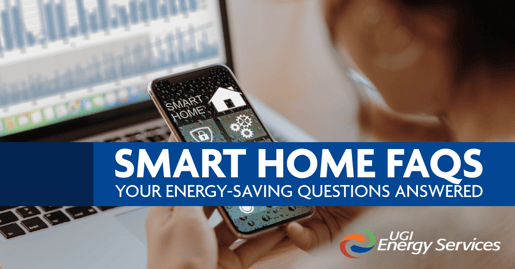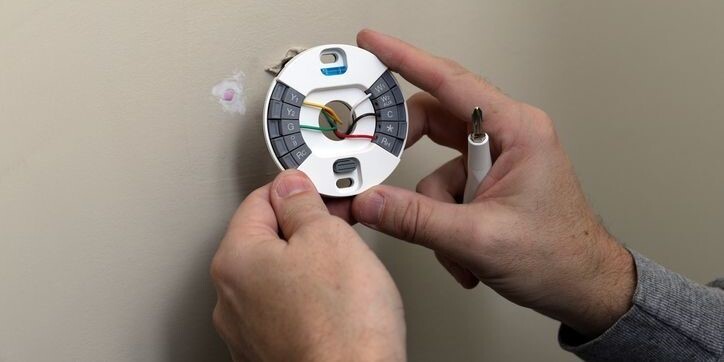Following our recent article, "How Smart Home Technology Improves Energy Efficiency and Safety", you may have questions about where to start and how these systems work—or how to make the most of your investment.
To help you move forward with confidence, this follow-up FAQ covers the top questions customers ask about smart home energy systems, from installation and compatibility to safety, savings, and rebates. Whether you’re just starting out or ready to upgrade, find answers here.

What is a smart home energy system?
A smart home energy system uses connected devices—like smart thermostats, energy monitors, lighting, and modern appliances—to optimize your energy use, automate comfort, and provide real-time insights for greater control and savings.
How much does smart home technology cost to install?
Entry-level smart thermostats start at around $100-$300, and full-home monitoring systems with smart appliances can range from $1,000 to $5,000+. Utility rebates and energy incentives can help reduce the cost of smart upgrades. Contact your natural gas or electric utility for possible rebates.
How easy is it to install a smart thermostat? Can I do it myself?
For most homeowners, installing a smart thermostat is a straightforward DIY project that usually takes under an hour.

Reputable brands typically provide step-by-step guides. You typically just need a screwdriver, your phone, and basic comfort with home projects. Key steps include turning off your HVAC system’s power, taking a photo of your old wiring, labeling wires, and following the on-screen instructions provided by the manufacturer. Most smart thermostats are designed to fit existing mounting holes and include labels or stickers to help match wires.
The main considerations are:
- Compatibility: Check with your thermostat’s compatibility tool to ensure it works with your HVAC system, especially if your system is older or more complex.
- Wiring: Many smart thermostats require a “C-wire” (common wire) for power. If your setup lacks this, an adapter or professional help may be needed.
- Placement: Install your thermostat in a central location, away from drafts, direct sunlight, or vents, for best accuracy.
If you’re handy and follow instructions closely, most installations are manageable yourself. Still, don’t hesitate to call a professional if you run into confusion, unique wiring, or if you prefer extra peace of mind.
Will smart home devices work with my current appliances?
Most modern furnaces, water heaters, and ranges are compatible with smart controls, and many older systems can be updated to work with these technologies. A professional assessment ensures the best setup for your home’s needs.
Are smart energy systems secure, and what about privacy?
Smart home devices use encrypted connections and often keep personal data private—energy usage patterns, not household details. Use strong passwords and change default passwords, enable updates, turn on two-factor authentication when possible, and consider separate networks for added security.
Can smart home technology really save money?
Yes! Smart thermostats and monitoring systems can reduce your energy bills by automating schedules, identifying inefficiencies, and enabling smarter energy habits. Most upgrades pay for themselves within a couple years.
What safety advantages do smart detectors provide?
Smart smoke, gas, and carbon monoxide (CO) detectors alert you to leaks and conditions in real time. Some can even automatically shut off supply lines for enhanced safety.
Are rebates and incentives available?
Many utilities offer rebates for smart thermostats and energy monitors—typically $25 or more per device. Demand response programs and federal credits may also apply, depending on your region and upgrades.
How do I get started with smart home upgrades?
Begin with high-impact, easy-to-install products like smart thermostats and monitoring. After establishing your energy baseline, consider safety detectors and appliance upgrades. Consult with experts for custom solutions and maximum incentives.
Ready to modernize your home or business? Reach out to the UGI Energy Services team for more information on increasing your home and business’ energy efficiency while lowering your energy bills.




